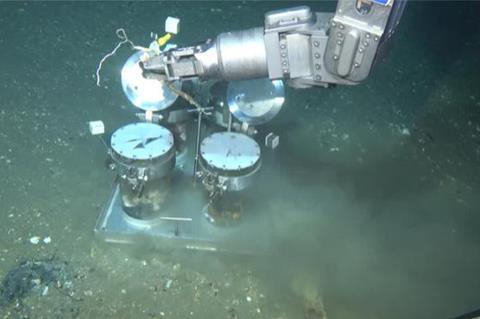Vestimentiferan tubeworms, unique deep-sea dwellers lacking a digestive system, rely on a symbiotic partnership with sulfide-oxidizing endosymbiotic bacteria (endosymbionts) for nutrients.

Living in chemosynthetic ecosystems like hydrothermal vents and cold-seeps, these worms house the endosymbionts in a specialized organ, facilitating gas exchange to fuel the microbes’ organic matter production, leading to the tubeworms’ remarkable growth and dense communities.
READ MORE: Giant deep-sea vent tubeworm symbionts use two carbon fixation pathways to grow at record speeds
READ MORE: Scientists unveil evidence for new groups of methane-producing organisms
Species like the giant tubeworm Riftia pachyptila exhibit exceptional growth rates, with documented annual increases in tube length exceeding 85 cm. Such extraordinary productivity suggests a highly efficient metabolic process, likely driven by numerous adaptations co-evolved by tubeworm host and endosymbionts.
Host-symbiont interactions
To unravel the complexities of host–symbiont interactions in these fascinating deep-sea creatures, a joint research team from the Institute of Oceanology of the Chinese Academy of Sciences (IOCAS) and the Hong Kong University of Science and Technology employed single-cell RNA sequencing technology.
The study was published in Science Advances on July 25.
Researchers and the “Faxian” remotely operated vehicle team developed a deep-sea in situ single-cell fixation system, enabling them to analyze the trophosome of the deep-sea tubeworm Paraescarpia echinospica.
Single-cell RNA sequencing coupled with complementary molecular analyses enabled the construction of a cellular atlas of the tubeworm trophosome. Results reveal distinct cell populations within the trophosome expressing genes associated with gas transport and metabolite shuttling, suggesting the formation of a biochemical gradient facilitating chemosynthetic substrate delivery from the trophosome periphery towards its center.
Bacteria with distinct jobs
“We identified two distinct bacteriocyte populations occupying separate microenvironments within each trophosome lobule,” said Dr. Wang Hao, first author of the study. “These results collectively demonstrate the tubeworm’s precise control over gas and metabolite distribution, establishing oxygenated peripheral and hypoxic central metabolic microenvironments within the trophosome.”
Intriguingly, integrated analysis of the symbionts’ key metabolic pathways suggests a spatial correlation between their metabolic state and location within the lobules. Bacteriocytes residing in the oxygen-rich periphery actively perform carbon fixation, a process of organic matter production.
Conversely, those inhabiting the hypoxic center engage in denitrification, potentically aiding the host in eliminating ammonia waste. This spatial organization within the tiny trophosome lobules allows for efficient nutrient production alongside waste detoxification.
Organized within lobules
“Our present study sheds light on common principles of symbiosis and environmental adaptation in deep-sea animals, and brings new insights into the interactions between microbes and their animal hosts,” said Dr. Wang.
“Our study’s workflow presents a novel experimental paradigm for generating molecular-level characterizations. This approach may facilitate investigation of biological adaptation in diverse non-model organisms, particularly the marine animals.”







No comments yet